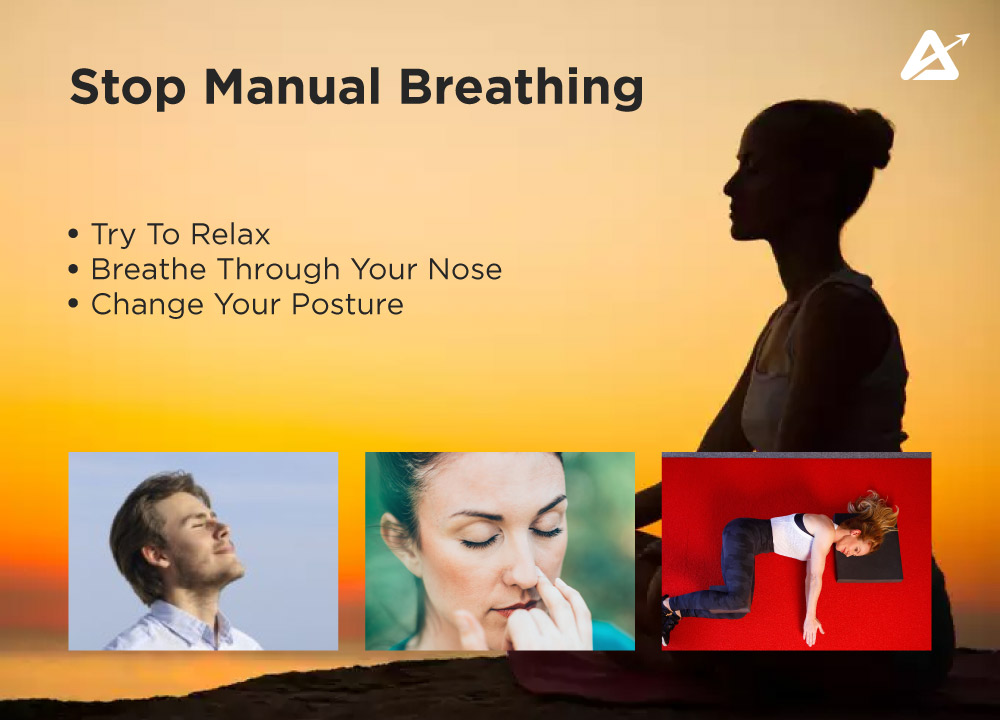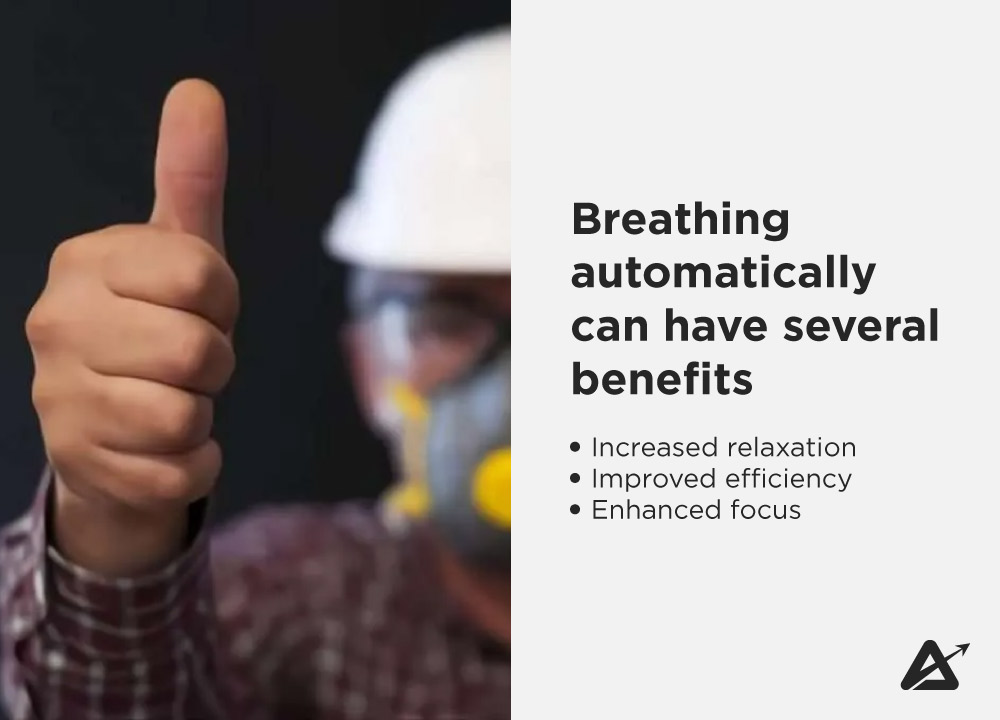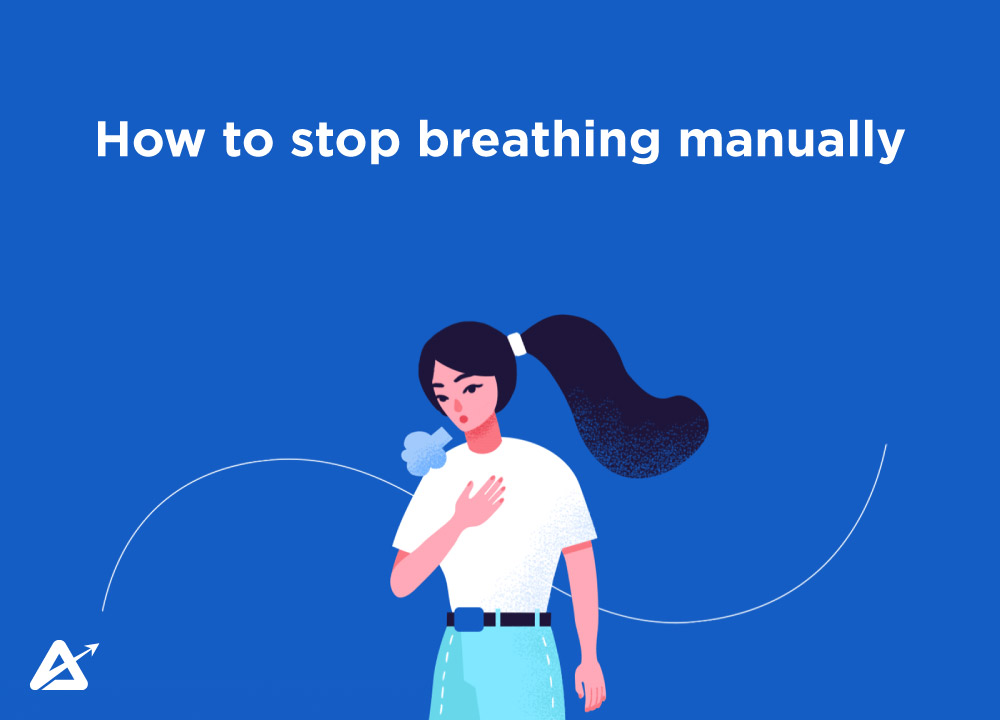If you want to know How How to stop breathing manually tips and tricks? Then you can write place. In this blog, we will explore some techniques and practices to help you. Let go of manual breathing and allow your body to resume its natural rhythm.
Breathing is an involuntary process controlled by our autonomic nervous system. Allowing us to obtain the oxygen necessary for our survival. However, it is not uncommon for people to become conscious of their breath and feel the urge to control it manually. While this can lead to a temporary sense of discomfort, it is essential to remember that our bodies are designed to breathe automatically.
What Is Manually Breathing?
“Manually breathing” refers to consciously controlling and regulating your breathing pattern instead of allowing it to occur automatically, as it does most of the time without your awareness. Normally, the act of breathing is regulated by the autonomic nervous system, specifically, the brainstem, which continuously monitors the levels of carbon dioxide and oxygen in the blood to ensure the body receives an adequate oxygen supply.
When someone mentions “manually breathing,” it often serves as a trigger for you to become aware of your breathing and consciously take control of the process. This can lead to a temporary disruption of the automatic breathing pattern, as your attention shifts from the automatic mode to consciously regulating each breath. It may involve focusing on the depth, rate, or rhythm of your breaths.
Thinking about breathing manually can be a source of discomfort for some individuals, as it can disrupt the natural flow of breathing and create a sensation of breathlessness or unease. However, it is important to note that despite consciously focusing on breathing, the underlying automatic processes continue to ensure you receive the necessary oxygen and remove carbon dioxide from your body.
Why do people need to stop Manual Breathing?

People need to stop manual breathing because breathing is an automatic and involuntary process controlled by the brainstem. When we consciously focus on breathing, we disrupt the natural rhythm and control of our breath, leading to a sense of discomfort and anxiety. Allowing our breathing to return to its automatic state helps maintain a harmonious and efficient respiratory system.
Tips and Tricks for Stop manual breathing

- Understand the process: Remind yourself that breathing is an automatic process that doesn’t require your conscious control. The more you understand this, the easier it becomes to let go and allow your body to resume its natural rhythm.
- Distraction techniques: Engaging in activities that divert your attention away from your breathing can be helpful. Focus on tasks that require mental or physical effort, such as reading a book, solving puzzles, exercising, BPD books, ocd, or engaging in a conversation with someone.
- Practice relaxation techniques: Relaxation exercises like deep breathing, progressive muscle relaxation, or meditation can help you calm your mind and reduce anxiety. They can also shift your focus away from the need to manually breathe.
- Breathing exercises: If you find it challenging to let go completely, you can try controlled breathing exercises to restore a sense of calm. For example, try inhaling deeply through your nose for a count of four, holding your breath for a count of four, and exhaling slowly through your mouth for a count of four. Repeat this pattern several times until you feel more relaxed.
- Seek professional help if needed: If you frequently experience difficulties with breathing or anxiety-related symptoms, it’s advisable to consult a healthcare professional or a therapist. They can provide you with appropriate guidance and support tailored to your specific needs.
Remember, these tips are not meant to replace professional advice. If you’re concerned about your breathing or anxiety levels, it’s important to consult with a healthcare professional to rule out any underlying medical conditions and receive appropriate care.
What are Easy Ways to Stop Manual Breathing?
- Engage in a distracting activity or task.
- Practice deep breathing exercises to promote relaxation.
- Shift your focus to something else, such as reading or watching a movie.
- Engage in physical exercise or activities that require concentration.
- Listen to music or a podcast to divert your attention.
- Use mindfulness techniques to stay present at the moment.
- Engage in conversation with others to keep your mind occupied.
- Use positive self-talk to redirect your attention away from manual breathing.
- Engage in a hobby or activity that you enjoy and can fully immerse yourself in.
- Practice meditation or yoga to promote a calm state of mind.
How To Stop Manually Breathing?

Try To Relax by Manually Breathing
“Try to relax,” they said as if it were an easy task. But how can one relax when every breath becomes a conscious effort? It’s like manually operating a machine that was designed to function effortlessly on its own. Inhale, exhale, repeat. The rhythm feels forced, and unnatural. Each breath becomes a burden, a reminder of the body’s autonomous systems being momentarily disrupted. The mind races, searching for a distraction, for something to occupy its focus. Yet, in the midst of this struggle, there’s a curious realization. The act of manually breathing forces a deeper connection with the present moment, an intimate awareness of each inhalation and exhalation. It becomes a gentle reminder to slow down, release tension, and find solace in the simplicity of breathing. So, I embrace this challenge and strive to find tranquility within the very act that seemed so arduous at first.
Breathe Through Your Nose to Manually Breathing
Breathing through your nose is a natural and instinctive process that allows you to manually regulate your breathing. When you consciously focus on inhaling and exhaling through your nose, you engage in a mindful practice that can have numerous benefits. Nasal breathing helps to filter and warm the air, reducing the likelihood of irritants reaching your lungs. It also promotes slower, deeper breaths, which can calm your nervous system, lower your heart rate, and enhance your overall sense of well-being. By choosing to breathe through your nose, you can harness the power of conscious breathing to bring balance and relaxation to your body and mind.
Change Your Posture by Manually Breathing
Changing your posture is typically achieved through conscious adjustments in body position, such as sitting up straight or standing tall. Breathing consciously can complement these adjustments by helping you become more aware of your body and potentially enhance your overall posture. However, it is important to note that simply focusing on your breath alone is unlikely to directly change your posture. Physical adjustments and exercises targeted at improving posture are generally more effective for achieving lasting changes.
To perform slow, deep breaths for manual breathing, follow these steps
- Find a comfortable and quiet space: Choose a calm environment where you can sit or lie down comfortably.
- Assume a relaxed posture: Sit or lie down in a position that allows your body to relax completely. You can rest your hands on your lap or place them on your abdomen.
- Inhale slowly through your nose: Take a slow, deep breath in through your nose. Focus on filling your lungs with air and expanding your abdomen as you breathe in.
- Pause briefly: Once you have inhaled fully, briefly hold your breath for a couple of seconds before moving to the next step.
- Exhale slowly through your mouth: Release the breath slowly through your mouth, allowing the air to escape gradually. Feel the tension leaving your body as you exhale.
- Repeat the process: Continue this slow, deep breathing pattern, inhaling through your nose, pausing briefly, and exhaling through your mouth. Maintain a steady rhythm and focus on the sensation of each breath.
- Relax and let go: As you continue the slow, deep breaths, let go of any tension or stress you may be holding. Allow your body and mind to relax with each breath.
- Continue for a few minutes: Practice this slow, deep breathing technique for a few minutes, gradually increasing the duration as you become more comfortable with the process.
Visualize Your Breath
Imagine yourself in a serene natural setting, surrounded by lush greenery and a gentle breeze caressing your skin. As you close your eyes, take a deep breath in, filling your lungs with pure, revitalizing air. As you exhale, envision your breath as a delicate mist, floating gracefully in the air before dissipating into the atmosphere. See it as a tangible representation of your life force, carrying away any stress or tension within you. With each inhale and exhales, feel a sense of calm and tranquility wash over you, grounding you in the present moment. Visualizing your breath allows you to connect deeply with your inner self, reminding you of the simple yet profound act of breathing and the profound impact it has on your well-being.
Concentrate On Your Breath
Inhale, exhale—breathe with intention, finding solace in the rhythm of life. In each breath lies a universe of possibilities, a moment of clarity amidst the chaos. Let the worries drift away, as the breath becomes an anchor to the present. Inhale, exhale—find serenity in the simple act of being, for within each breath, you discover the power to center your soul.
Try to do regular Some Gentle Exercises for breathing manually
Regular gentle exercises for breathing can be incredibly beneficial for improving overall lung function and promoting relaxation. These exercises, often referred to as diaphragmatic breathing or deep breathing exercises, involve consciously controlling the breath and engaging the diaphragm to take in deeper, fuller breaths.
One simple exercise is belly breathing. Find a comfortable seated or lying position, place one hand on your abdomen, and take a slow, deep breath through your nose. As you inhale, allow your belly to expand, feeling it rise against your hand. Then exhale slowly through your mouth, feeling your belly fall as you release the breath. Repeat this process several times, focusing on the sensation of your breath filling your body and creating a sense of calm, etc.
Practice Diaphragmatic Breathing
Diaphragmatic breathing, also known as deep belly breathing or abdominal breathing, is a technique that promotes relaxation, reduces stress, and enhances overall well-being. To practice diaphragmatic breathing, start by finding a comfortable position, either sitting or lying down. Place one hand on your chest and the other on your abdomen. Take a slow, deep breath in through your nose, allowing your belly to rise as you fill your lungs with air. As you exhale through your mouth, feel your belly sink back down. Focus on the sensation of your breath as it moves in and out, and try to make each breath slow and controlled. Practice diaphragmatic breathing regularly to tap into its calming effects and improve your mind-body connection.
Get Good Sleep to stop breathing manually
Getting good sleep can help you stop breathing manually. When you prioritize quality sleep, your body enters a deep and restorative state that allows your respiratory system to function optimally. By establishing a consistent sleep routine, creating a comfortable sleep environment, and practicing relaxation techniques, you can promote natural and effortless breathing during sleep. Remember, good sleep fosters overall well-being, including the regulation of involuntary bodily processes like breathing.
Consciously Slow Down Your Breathing
Inhale serenity, exhale tranquility. Take a moment to consciously slow down your breathing. Feel the gentle rhythm of each breath, like a calm tide washing over your being. Let the world outside fade away, as you embrace this precious present. Breathe in, hold, breathe out, and let the stresses dissolve. With every deliberate breath, find solace in the stillness within.
Go Walk to stop breathing manually
“Go Walk is a technique used to alleviate conscious control over breathing. By engaging in physical activity such as walking, individuals can divert their attention away from manual breathing and allow the body’s natural respiratory system to take over. This approach helps restore automatic breathing patterns and relieves the temporary sensation of needing to consciously breathe.”
Stopping manual breathing and allowing your body to regulate your breathing automatically can have several benefits. Here are a few

- Increased relaxation: When you stop focusing on your breath and let your body take over, you can experience a greater sense of relaxation. Manual breathing can sometimes lead to overthinking and tension, whereas allowing your body’s natural rhythm to guide your breathing promotes calmness.
- Improved efficiency: The human body is designed to breathe automatically without conscious effort. By relinquishing control, you allow your respiratory system to function optimally, ensuring that oxygen is distributed efficiently throughout your body. This can lead to improved overall respiratory function.
- Enhanced focus: Constantly monitoring and adjusting your breath can be distracting and take away from your ability to concentrate on other tasks. Allowing your breath to flow naturally frees up mental space, allowing you to focus on the present moment and the task at hand.
- Stress reduction: Stress and anxiety often manifest in shallow, rapid breathing patterns. By relinquishing control and allowing your body to breathe naturally, you can help counteract these stress-induced breathing patterns. Deep, diaphragmatic breathing, which often occurs automatically, promotes relaxation and triggers the body’s relaxation response.
- Mind-body connection: Letting your body regulate your breathing can deepen your connection with your body and increase your awareness of its subtle cues and rhythms. This can be particularly beneficial during activities such as meditation, yoga, or mindfulness practices.
It’s important to note that while automatic breathing is the norm for most people, some individuals with certain respiratory conditions or health issues may require manual control of their breathing. If you have any concerns about your breathing or respiratory health, it’s always advisable to consult with a healthcare professional.
Stopping breathing manually, or intentionally holding one’s breath for an extended period of time, can have several disadvantages
- Oxygen deprivation: Holding your breath for too long can deprive your body and brain of oxygen. This can lead to dizziness, lightheadedness, confusion, and even loss of consciousness.
- Hypoxia: Prolonged oxygen deprivation can result in hypoxia, a condition characterized by insufficient oxygen supply to the body’s tissues and organs. This can cause damage to vital organs, including the brain, heart, and lungs.
- Increased carbon dioxide levels: Holding your breath leads to a buildup of carbon dioxide in the body. Elevated carbon dioxide levels can cause discomfort, shortness of breath, and in severe cases, respiratory distress.
- Potential injury: Breath-holding can put a strain on the respiratory system and may increase the risk of injury. The sudden release of breath after extended periods of breath-holding can cause a forceful expulsion of air, potentially leading to damage to the airways or lungs.
- Cardiac stress: Breath-holding can induce stress on the cardiovascular system, particularly in individuals with underlying heart conditions. The strain placed on the heart can potentially lead to irregular heart rhythms or other cardiovascular complications.
It is important to note that intentionally stopping breathing should only be done under controlled conditions and with proper training. Engaging in breath-holding exercises without guidance or in hazardous situations can be extremely dangerous and should be avoided.
Conclusion
While the urge to manually control our breath can be unsettling, it is important to understand that our bodies are equipped with an automatic respiratory system. By practicing mindfulness, engaging in distraction techniques, and incorporating relaxation exercises into our routine, we can let go of manual breathing and allow our bodies to function as they naturally should. Remember to trust your body’s wisdom, be patient with yourself, and embrace the innate rhythm of your breath.






